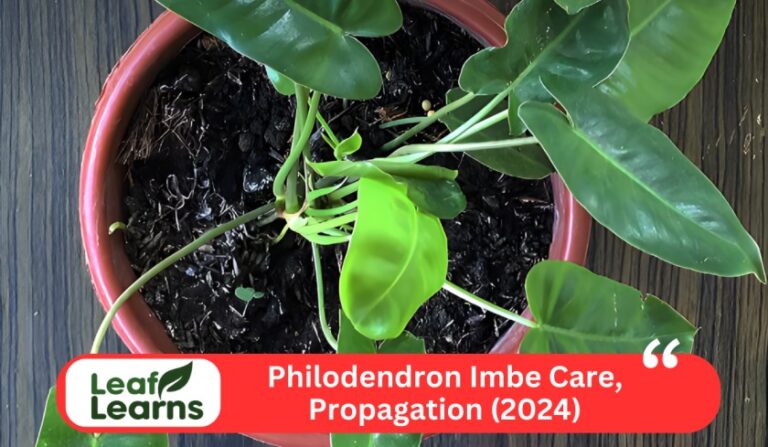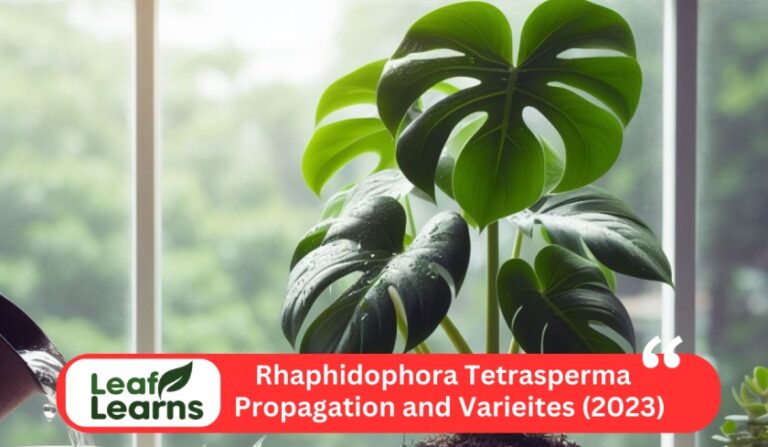How to Grow or Propagate Thai Constellation Monstera (2023)
Propagation is the process of multiplying or divide the parent plant into new plant. And In this article I will explain the process or methods of how to propagate Thai Constellation Monstera.
| Plant Name | Thai Constellation Monstera |
| Propagation | Propagated by stem cuttings or air layering |
| Pruning | Remove dead or damaged leaves regularly |
| Pests | Spider mites, mealybugs, and aphids |
| Varieties | Thai Constellation Monstera is known for its unique variegated foliage |
| Other Monstera varieties include Monstera deliciosa and Monstera adansonii | |
| Benefits | For decoration, Air purifiers, and Ornamental plants |
Contents
- 1 Thai Constellation Monstera Propagation
- 2 Propagation Steps
- 3 Air layering
- 4 How to Grow Thai Constellation Monstera From Seed
- 5 How to Get Thai Constellation Monstera to Bloom
- 6 Underwatering And Overwatering
- 7 Varieties/Types of Thai Constellation Monstera
- 8 Growth Rate and Size
- 9 Thai Constellation Monstera Appearance and Fragrance
- 10 Caring and Propagate Thai Constellation Monstera
- 11 FAQs
Thai Constellation Monstera Propagation
Materials You’ll Need:
- Healthy Thai Constellation Monstera plant
- Clean, sharp pruning shears or scissors
- A small pot with well-draining potting mix
- Water or rooting hormone (optional)
- Plastic wrap or a plastic bag
- Rubber bands or twine (optional)

Propagation Steps
Select a Healthy Stem:
Pick a stem with at least one node that is healthy. The little, rough regions on the stem known as nodes are where leaves, roots, and new growth sprout.
Prepare the Cutting
A portion of the stem should be cut immediately below a node using sterilized pruning tools or scissors. To maximize the surface area for root growth, make a precise, diagonal incision.
Optional: Apply Rooting Hormone
You can dunk the cut end of the stem in a rooting hormone powder or gel to promote faster root formation. This step can improve your chances of success even if it is optional.
Plant the Cutting
Put the stem cutting in a little container with potting soil that drains properly. Ensure the node is buried by inserting it 1-2 inches into the ground.
Create a Mini Greenhouse
Cover the pot and cut it with a plastic bag or piece of plastic wrap to preserve a humid atmosphere.
If required, fasten it with twine or rubber bands. This will contribute to a small-scale greenhouse effect.
Provide Indirect Light
Put the plant somewhere that gets plenty of bright, indirect light. Avoid the sun’s direct rays since they might burn the cutting.
Maintain Humidity
Check the cut from time to time to make sure the soil is regularly wet but not soggy. To retain humidity, spray the cutting within the plastic covering.
Root Development
You should start to notice roots forming after a few weeks. To see if the cutting is firmly rooted in the ground, give it a little tug.
Transplanting
You may transplant the cutting into a larger pot with the proper potting mix for mature Thai Constellation Monstera plants once it has developed a strong root system, which normally takes a few months. So this the process of Propagate Thai Constellation Monstera.
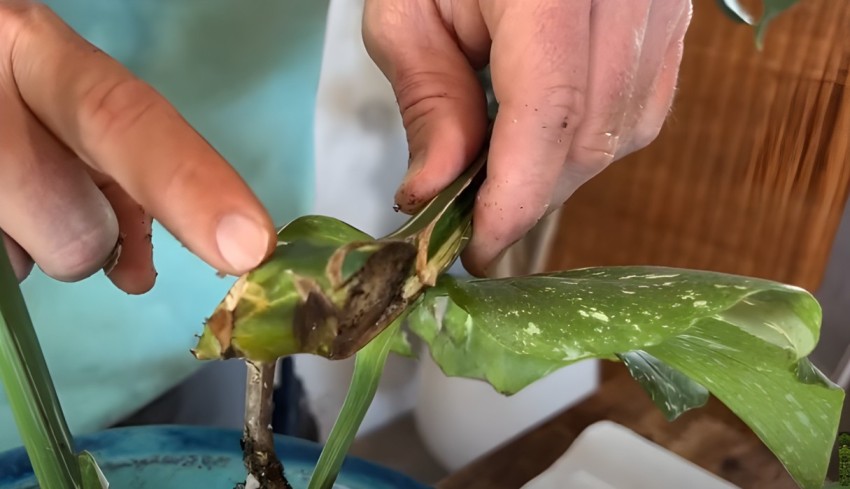
Air layering
Air layering is a popular method for propagating the Thai Constellation Monstera (Monstera deliciosa ‘Thai Constellation’). Here’s how you can propagate this plant using air layering:
Select a Healthy Stem: Select a stem that is ripe and in good condition from the Thai Constellation Monstera plant. It should have multiple nodes since here is where the roots will grow.
Prepare the Stem: Find the node on the chosen stem where the air layer should be placed. The place on the stem where leaves and roots develop is called a node. Get rid of any branches or leaves that are near the node.
Create a Wound: Use a sharp knife or blade to gently scrape off the topmost layer of the stem’s bark at the chosen node. This promotes the development of roots.
Apply Rooting Hormone:To encourage root development, you can optionally add a rooting hormone to the exposed region. Although not usually required, this step can aid in accelerating the procedure.
Wrap with Moist Substrate: Place some damp sphagnum moss or any similar ground around the wounded node. The substrate should then be wrapped in plastic wrap or a transparent plastic bag to preserve moisture.
Secure the Wrap: In order to establish an enclosed, humid environment, make sure the plastic wrap or bag is well tied around the stem.
Wait for Roots to Develop: In the wet substrate, roots will start to form over the period of a few weeks to a few months. By carefully removing a little piece of the plastic, you may check on the development from time to time.
Separate and pot: Using a clean, sharp knife, carefully cut below the rooted part after the air layer develops a sufficient quantity of roots (often at least a few inches long). Place the roots portion in a container with a potting mixture that drains properly.
Care for the New Plant: After the new plant has been potted, it should be given the same attention as an established Thai Constellation Monstera. Make sure it meets the necessary standards for lighting, humidity, and water. So this the process of Propagate Thai Constellation Monstera.

How to Grow Thai Constellation Monstera From Seed
From seed, growing Thai Constellation Monstera may be a novel gardening experience. Fresh seeds should be planted in well-draining potting soil, given a gentle watering, and kept in indirect light to begin with.
Maintain a warm climate, ideally between 75 and 85 degrees Fahrenheit (24 and 29 degrees Celsius). Create a little greenhouse effect with a plastic cover to maintain humidity levels.
Germination might take weeks or months, so have patience. Transplant the seedlings into separate pots after they have two sets of genuine leaves.
Growing Thai Constellation Monstera from seed may be gratifying even though it’s more difficult than other ways of propagation if you’re patient and aware of their demands. So this the process of Propagate Thai Constellation Monstera.
How to Get Thai Constellation Monstera to Bloom
Give your Thai Constellation Monstera the best care possible to enhance blooming. First, make sure it gets enough of direct, strong sunshine.
It’s essential to keep the soil’s moisture level constant while avoiding over watering. During the growth season, fertilize using a balanced, water-soluble fertilizer.
A good humidity level is also beneficial. Pruning has the ability to promote flowering and growth.
The plant may reward you with its distinctive, striking blossoms if you keep it free from pests and illnesses. Keep in mind that waiting for a Monstera to blossom requires patience.
Underwatering And Overwatering
- Underwatering: Your Thai Constellation Monstera may suffer if not given enough water.
- The leaves might droop and get crunchy.
- The plant may falter and its growth may stop.
- The soil has to be regularly wet but not soggy.
- Overwatering: Water in excess might cause problems.
- Yellowing leaves can be caused by rotting roots.
- There might be fungus gnats.
- Before dehydrating, let the top inch of soil dry to prevent over hydration.
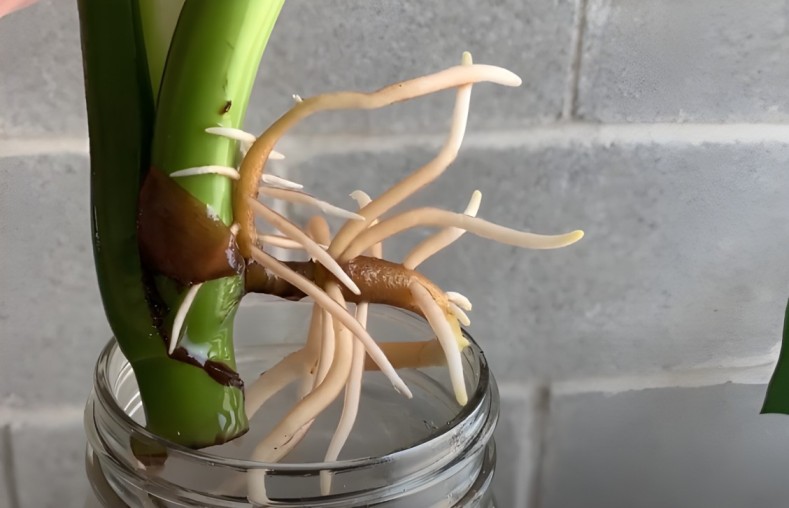
Varieties/Types of Thai Constellation Monstera
Classic Thai Constellation Monstera (Monstera deliciosa ‘Thai Constellation’): This is the common variety of Constellation Monstera in Thailand. It has leaves that are marbled green with creamy-white variegation, giving it a classy and distinctive appearance that shines out in any space.
Mini Thai Constellation (Monstera adansonii ‘Thai Constellation’): This lovely cultivar is a little relative of the traditional Thai Constellation Monstera. It is a great choice for compact settings because of its delicate, heart-shaped leaves that are decorated with the same attractive variegation.
Half-Moon Thai Constellation (Monstera deliciosa ‘Thai Constellation Variegata’): This variant, as its name implies, features leaves with half-moon or crescent-shaped variegation. It’s a unique find that gives your plant collection a dash of quirkiness.
Philodendron Thai Sunrise (Philodendron hederaceum ‘Thai Sunrise’): This kind of Philodendron, though not a Monstera, is sometimes confused with the Thai Constellation Monstera owing to its variegated leaves. It is a popular option because to its small size and gorgeous colours.
Variegated Monstera deliciosa: Variegated Monstera deliciosa plants with white or cream marbled patterns on its leaves give a distinctive and eye-catching look, while not being a Thai Constellation Monstera.
Monstera Borsigiana albo variegata: This plant, which is also a close cousin, has lovely albo variegation, with green leaves that have sporadic white patches on them. For lovers of Monstera, it’s a fantastic alternative.
Growth Rate and Size
The magnificent variegated leaves of the Thai Constellation Monstera are recognized, and it grows at a modest rate. It may increase in height by up to 2-3 feet every year under ideal circumstances.
It is a reasonable indoor plant because it matures to a height of 5-8 feet on average.
For plant lovers wishing to upgrade their indoor settings, it is a popular option because to its stunning beauty and manageable size.
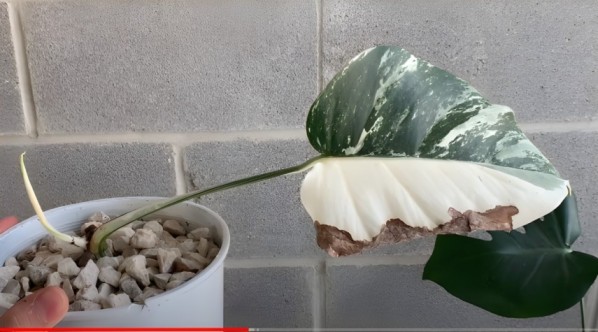
Thai Constellation Monstera Appearance and Fragrance
The Thai Constellation Monstera is a popular houseplant because of its attractive beauty and pleasant scent.
It is a distinctive and lovely addition to any environment thanks to the beautiful variegated leaves that have white marbling that resemble stars in the night sky.
This plant is adored for its delicate, pleasant aroma, which adds to its beauty even if its look steals the show.
It’s simple to cultivate and a great option for both novice and seasoned plant aficionados.
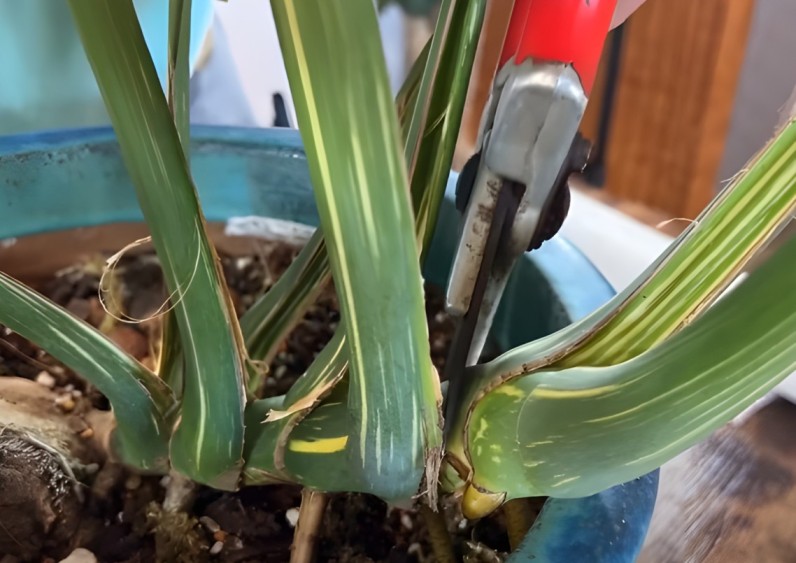
Caring and Propagate Thai Constellation Monstera
Growing the stunning Thai Constellation Monstera is a rewarding experience. Its vibrant leaves, adorned with a unique constellation-like pattern, captivate enthusiasts around the globe.
Proper care and maintenance are crucial for this plant’s health, with considerations ranging from the monstera thai constellation entretien to successful propagation techniques like monstera thai constellation bouture.
You can propagate Thai Constellation Monstera through various methods such as water propagation or propagation in pot. Additionally, understanding factors like humidity, light exposure, and soil moisture is vital.
Whether you’re interested in the monstera Thai constellation propagation calculator, care tips, or even saving it from root rot, your journey with this plant is a delightful one.
FAQs
How to root Monstera Thai constellation?
Take a stem cutting with nodes from the Monstera Thai constellation, submerge it in water, and watch for roots to emerge. Move it to well-draining soil once it has taken root.
How fast do Monstera Thai grow?
he monstera Thai constellation grows slowly. Depending on treatment, growth pace may vary, but it normally results in observable new growth every several weeks.
Is Monstera Thai constellation a fast grower?
According to popular belief, Monstera Thai constellation does not grow as quickly as some other houseplants. Under the ideal circumstances, it displays modest growth.
Can you propagate a Monstera from a cutting?
Yes, you can propagate Monstera from a cutting. Stem cuttings with nodes can be propagated in water or soil.
How long does it take for a Monstera Thai constellation to mature?
Over the course of several years, the Monstera Thai constellation develops, and as it does, the distinctive variegation pattern becomes increasingly obvious.
6 What are the best growing conditions for Thai constellation?
Thai star system Monstera grows best on soil that drains well and receives frequent irrigation. Keep the atmosphere humid for optimum development.
What is the success rate of Monstera cuttings?
If treated properly, monstera cuttings have a high success rate. When the correct circumstances are there, they frequently root and flourish.
How long can Monstera live in water?
Monstera cuttings can remain in water indefinitely, but for optimal long-term health and growth, move them to soil after roots have formed.


